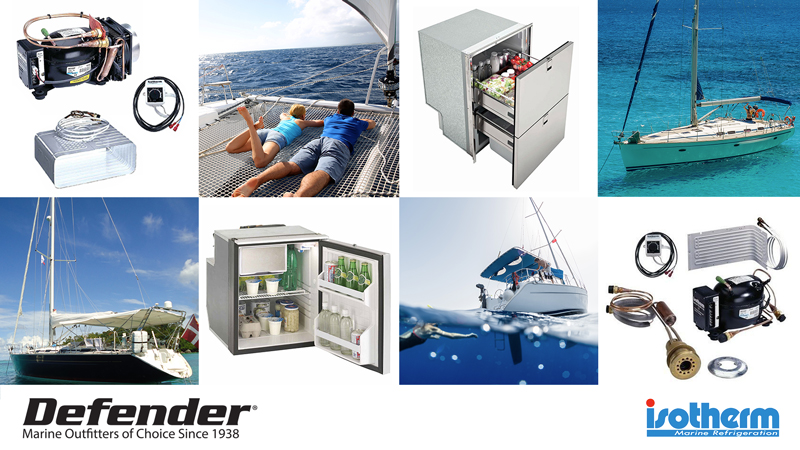
Sneak Preview of the October Racing Calendar
Happening This Week
Racing this week, through October 2, is the J/105 North Americans, hosted by San Francisco Yacht Club. Berkeley YC will host the Express 37 Nationals on Friday-Sunday.
St. Francis YC will run the Calvin Paige Regatta for Moore 24s this weekend. Meanwhile, Los Angeles YC will host the Mercury Pacific Coast Championship.
This Saturday, Half Moon Bay and HMBYC will put on a show for El Toros. “Looks like a moderate south wind and flat water,” writes El Toreador Gordie Nash. “There will also be Coast Guard rescue demonstrations and other town events — a good day to be on the coast. Should also be warm weather. Please pre-register, then go to calendar and click on Vice Commodore’s Regatta October 1.” We expect that Lasers, Cal 20s and Coronado 15s will also race in the Vice Commodore’s Regatta.
Next Week
Registration fees increase on October 4 for the Olson 25 Nationals and Wylie Wabbit Nationals. Save the $50 late fee and register early. SFYC will host the regatta on October 7-9. The club will also run their Fall Classic Regatta for Bird, Bear, Folkboat and Alerion 28 classes on that Saturday and Sunday.
Sequoia YC’s Moonlight Marathon will sail under the evening sky on October 8. El Toros will Stampede at Richmond YC on the 9th, and on that same Sunday, Berkeley YC’s weekly Chowder Series will kick off.
Mid-Month Regattas
On October 15, St. Francis YC will host classic wooden boats in the Jessica Cup, and Oakland YC will have their Oktoberfest.
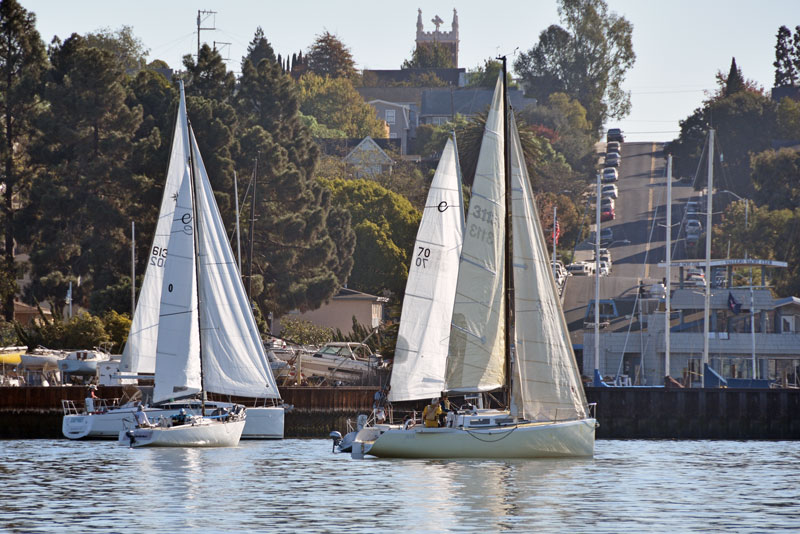
The unique regatta that is the SSS Vallejo 1-2 will happen on October 15-16. Race to Vallejo YC singlehanded on Saturday; pick up one crew and race from VYC to RYC doublehanded on Sunday.
StFYC’s Joe Logan/Fall Invitational Regatta will sail on October 16 only. The Joe Logan Regatta is open to all Mercury skippers in good standing with the class association. The Fall Invitational Regatta is open to all Knarrs, Folkboats, and J/24s whose skippers are members in good standing with their class associations. Each class must have a minimum of six boats registered by October 12.
The Fourth — but Not Final — Weekend
The following week, San Diego YC will host the International Masters Regatta on October 21-23. The week after that, SDYC will hold the San Diego Lipton Cup on October 28-30.
Tiburon YC will hold their Joan Storer Memorial Women’s Regatta on October 22. “This race is open to everyone,” says TYC. “No woman skipper available? That’s OK, but the skipper and crew must be made up of at least 50% women.”
Also on the 22nd, El Toros will descend upon Sequoia YC ifor the Corkscrew Slough Regatta in Redwood City.
StFYC will host the Fall Dinghy Regatta and I420 Pacific Coast Championship on October 22-23. The regatta is open to 5O5, I14, C420, I420, ILCA 7, ILCA 6, ILCA 4, RS Tera, RS Feva and Opti classes whose skippers are members in good standing of their respective class associations. Other one-design dinghy classes are invited to contact the StFYC Race Office by October 7 for possible inclusion.
Don’t Get Spooked!
As October creeps along to its demise, some regattas are popping up that will send shivers down your spine — no matter what the weather holds in store!
Tiburon YC’s Red Rock Regatta and Halloween party will be on Saturday, October 29. This race will complete the club’s Round the Rocks Race Series. Meanwhile, down south, Alamitos Bay YC in Long Beach will host a Halloween Regatta on that date.
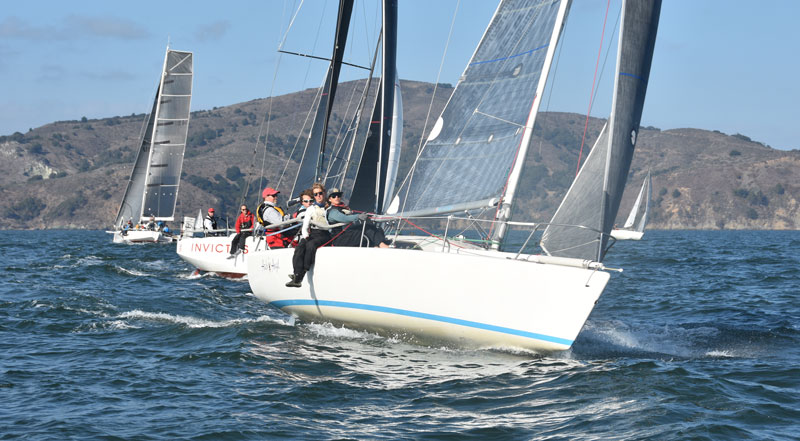
RYC’s Great Pumpkin Regatta will occupy the full weekend of October 29-30, with buoy racing on Saturday, a pursuit race on Sunday, and a Halloween party in between with dancing to the tunes of Shark Sandwich and a costume party. The theme this year will be Día de los Muertos.
You’ll find these and many more in our Calendar, coming out in the October issue of Latitude 38 this Friday, September 30.
Good Jibes #59: Randall Reeves Shares His Figure 8 Voyage
This week’s host, Moe Roddy, is joined by Randall Reeves to chat about Randall’s unbelievable Figure 8 Voyage and other adventures around the world. Randall is the first person to complete the 40,000-nautical-mile Figure 8 Voyage singlehanded — an achievement that resulted in his receiving the CCA’s (Cruising Club of America’s) 2020 Blue Water Medal.
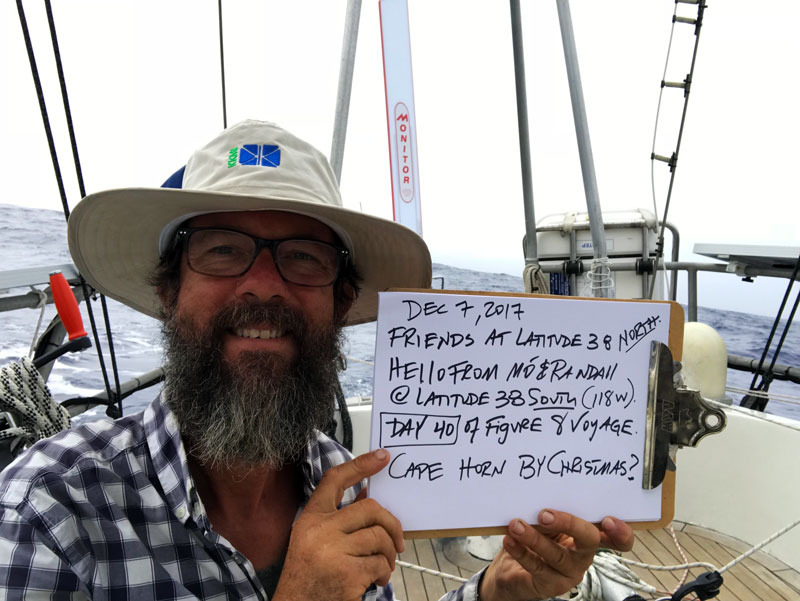
Randall shares the most extreme parts of his passage around the Americas and Antarctica, the most difficult and exhausting stretches, what he learned on his first attempt, and how to solve problems on the water and battle big storms and big seas.
This episode covers everything from the Northwest Passage to penguins. Here’s a small sample of what you will hear:
- How did Randall get interested in singlehanding?
- Did he dream of sailing offshore one day?
- How did he get into bluewater sailing?
- What is the Figure 8 Voyage?
- How much of the Northwest Passage is open?
- Why is Randall’s boat called Moli (aka Mo)?
- How long did it take him to get through the Northwest Passage?
- Short Tacks: Do polar bears hibernate?
Learn more at Figure8Voyage.com and check out Randall’s picture book, The Figure 8 Voyage: https://www.amazon.com/Figure-8-Voyage-Randall-Reeves/dp/B0B3DGYXFJ.
Defender: Isotherm Marine Refrigeration
Get your Isotherm Marine Refrigerators and Cooling Systems from Defender — Marine Outfitters of Choice Since 1938.
Why Does the US Rescue Sailors for Free? Because We Can
Who should pay for rescues on the high seas?
We asked that very question in January, though the query arises — or erupts, like an angry volcano — in the case of nearly every rescue or incident of “questionable” judgment. There are countless variations, but at the core, the questions boil down to: “Why are my taxes funding this?” And, “Why doesn’t the rescued mariner have to pay something?”
“The question of where to draw the line between the freedom of the high seas and personal responsibility is difficult,” a reader commented on the high-profile rescue of a kayaker off San Francisco in June 2021. “New Zealand draws it at one end of the spectrum and the US draws it at the other end.
“Why, at a minimum, should there not be an inquiry done by the Coast Guard for every significant rescue? If the inquiry found the ‘mariner’ did not heed the basic rules of seamanship of being a capable crew on a seaworthy boat, why should they not be accountable for some or all the costs of the rescue? If mariners knew there could be an accounting of their actions they might think twice or come up with a private rescue plan. That would be a good article for Lat 38.”
We sought to investigate that angle, but were wary of the knee-jerk reactions that tend to come with every rescue. Besides, the answer became almost absurdly self-evident.
Why do we rescue sailors for free? Because we can, because the United States spends more than 10% of its federal budget, and nearly half of its discretionary spending, on the military, and one of the apparent benefits of this staggering investment is the humanitarian component. We have bought and paid for the most elite ocean-patrolling force in the world; we have invested in the infrastructure and personnel to carry out rescues on the ocean.

The glaring self-evidence revealed itself to us during the rescue of Andy Schwenk in August, which was a joint effort of the US Coast Guard, the California Air National Guard, the Air Force, a commercial ship, the Pacific Cup organization, and another sailing vessel. The military assets used to rescue Andy were two Pave Hawk helicopters and two C-130 airplanes, one of which dropped two pararescue troopers/medics, or PJs, to rendezvous with Andy on the commercial ship.
“I kept apologizing to the PJs for the trouble,” Schwenk told us, referring to the two medics who parachuted from a C-130 to the Taiwanese tanker to care for Schwenk before the trio was picked up by a Pave Hawk helicopter. “They kept telling me that they were happy to be there, and that it beat fighting wildfires.”
Some of us here at Latitude are less than enthusiastic when Fleet Week comes rolling through town. We fully support members of the military and their families (one of our staff used to teach sailing for the Navy), and feel nothing but gratitude for the people who risk their lives to save sailors, but we’re wary of the policymakers wielding this awesome force with its immense budget.
“In the councils of government, we must guard against the acquisition of unwarranted influence, whether sought or unsought, by the military-industrial complex,” said President Dwight Eisenhower in 1961. “The potential for the disastrous rise of misplaced power exists, and will persist. Only an alert and knowledgeable citizenry can compel the proper meshing of the huge industrial and military machinery of defense with our peaceful methods and goals, so that security and liberty may prosper together.”
For peaceniks like us, using the armed services for humanitarian purposes is a kind of consolation prize for what we see as dramatic imbalance in our national fiscal priorities.
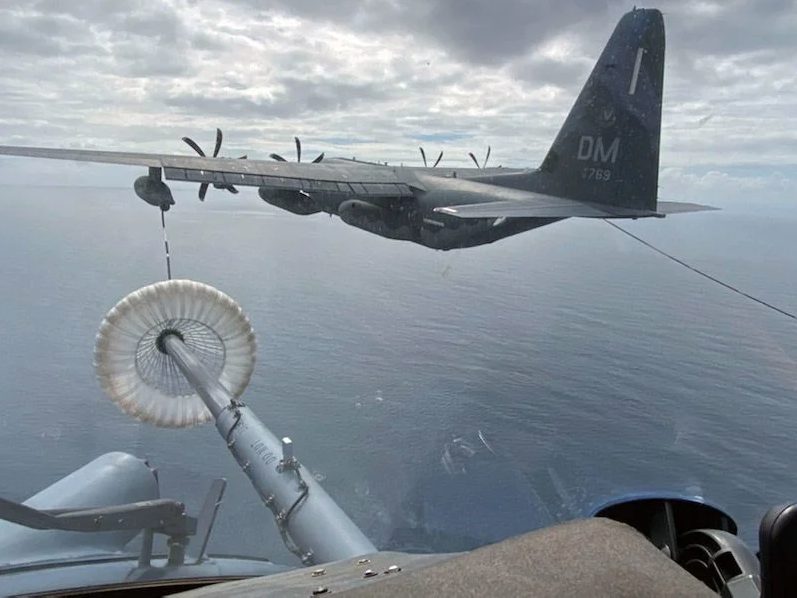
So, are we saying, “Throw caution to the wind and head out to sea with no training, poor equipment, and ambitions in excess of your skills? What the hell? Someone will come to rescue you, gratis. Tell them that Latitude sent you.”
We are absolutely not saying that.
We cannot emphasize safety and training enough, nor can we easily quantify those concepts. Surely, the first part of seamanship is learning your own boundaries — meaning your strengths and weaknesses — and planning and training accordingly. A reader mentioned earlier wondered what if “‘mariner[s] did not heed the basic rules of seamanship of being a capable crew on a seaworthy boat”?
There are some objective measures for seamanship and seaworthy vessels, but there is no universal standard or licensing, or any guarantee that this would prevent mishaps at sea. We have said this many times before: We’ve seen novice sailors go on to circumnavigate without incident, and we’ve seen seasoned and endlessly qualified mariners get into trouble.
(After the strange rescue of the Sea Nymph in 2017, where two apparent sailing novices had been adrift in the Pacific for months, one reader wrote us, saying, “Our completely voluntary, recreational sport [is] largely unregulated, and I wish to keep it that way. It is my take that regulations/authorities appear as a reaction to abuse/excess/problems.)
It is only natural, and at times beneficial, to consider the “lessons learned” after any incident at sea, even one that we’ve only read about and therefore have little knowledge of. There’s a fine line, however, between an objective look at someone else’s decisions, and armchair captaining, or flagrant judgment of sailors doing their best to cope with a situation.
There seems to be a need to punish or even shame sailors for their mistakes, and to point to the tax dollars used for their rescue as the most egregious evidence of their transgressions. (Has this “shaming culture” taken a more bitter tone and become more of a knee-jerk reaction in the social-media era?)
We often hear people say, “I don’t want my tax dollars to pay for this.” If there is an option of opting out of paying for the services or policies that you do don’t like, sign us up! And, if you’re really concerned about the money, then there are lots of corporations that pay little to no taxes.
And if you’re worried about the people doing the rescuing: “This is what we do,” said a Bay Area-based Coast Guard officer about the rescue of kayaker Cyril Derreumaux in 2021. “We’re budgeted for it. Because of the volume of cases we do here, we’re probably the best in the world at it.”
Celebrate the Bay This Weekend in Vallejo and Redwood City
If you’re looking for a good way to enjoy a sunny, warm fall weekend on or near the water, Vallejo and Redwood City have just the right events. Both are celebrating their waterfront communities and have a full day of family fun planned both on and off the water.
Vallejo
The City of Vallejo is holding its 8th Annual Vallejo Waterfront Weekend, celebrating the City of Vallejo, the historic Mare Island Naval Shipyard, and Solano County.

Activities include the Whaleboat Regatta (there have been whaleboat races in the Mare Island Straits since the 1970s), Kayak Tours and Rentals, Splash Chair, Disc Golf and Kornhole tournaments, Car Shine and Show, and many more activities and displays. Ten different bands will play across Saturday and Sunday, and you’ll even be able to ride a hot air balloon!
Check the guide for full details and the program of events.
In addition to providing a free, fun-filled event for the entire community, Vallejo Waterfront Weekend provides much more. It’s an opportunity for various nonprofits to showcase their organizations and raise much-needed funds. Net proceeds from this weekend are shared between the nonprofits that participate in putting on the festival and the Vallejo Waterfront Committee. In the last six years, the event has raised over $100,000 for local nonprofits.
Redwood City
At the south end of the Bay, the Port of Redwood City is hosting PortFest on Saturday, October 1, from 11 a.m. to 3 p.m. This free event welcomes the community to learn about Redwood City’s maritime heritage and to experience adventures on the Bay.
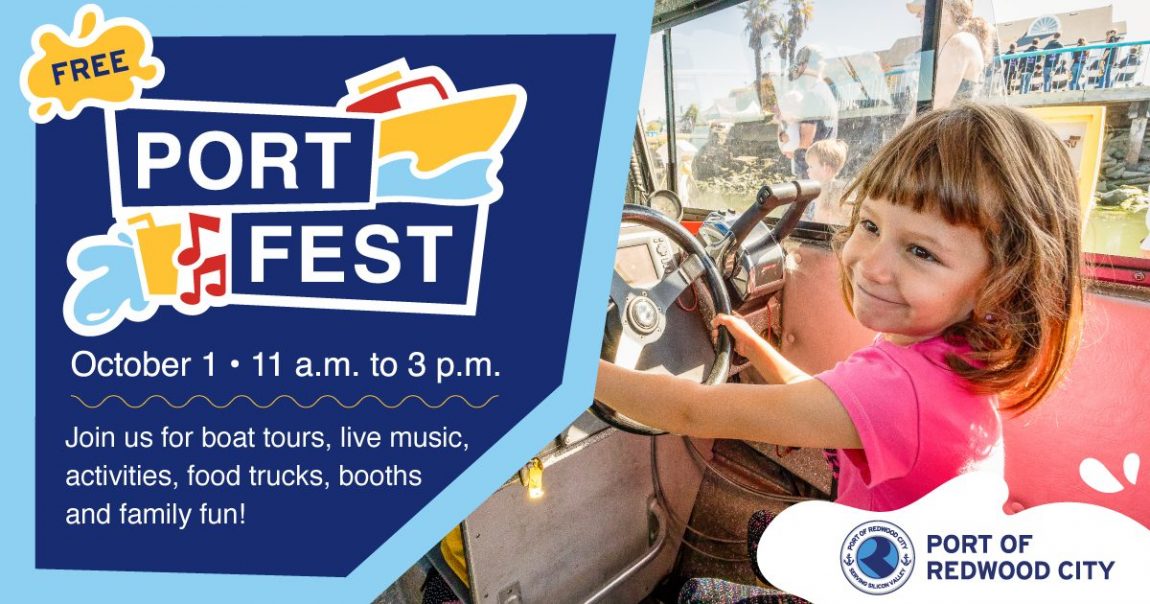
This year’s activities include boat-ride harbor tours with the Marine Science Institute, free water tours aboard the Sea Scout and Mariner Girl Scouts’ vessels, kid zone, live music, food and drink booths, the Mid-Peninsula Old Time Auto Club Car Show, and much more!
PortFest is at 475 Seaport Ct., Redwood City.
Check the schedule of events for more details.

